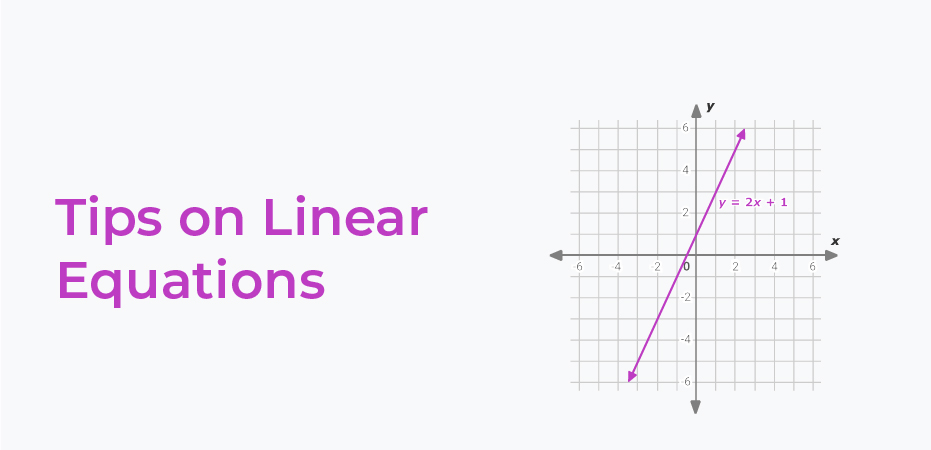How to write a linear equation? When plotted on a Cartesian coordinate plane, algebraic linear equations produce x and y values in the pattern of a straight line. From the graph or from given values, you can derive the standard form of the linear equation.
All higher mathematics is based on linear equations since algebra is fundamental to it. Linear equations, for example, can be expressed in the standard form, the slope-intercept form, or the point-slope form.
How to write a linear equation: Instructions
A linear equation has the following standard form:
y = MX + b
m = slope, b = y-intercept.
Calculate the slope of the line. The slope can be determined by selecting two points on the line, determining their vertical rise and horizontal run, and dividing them. As an example, if (3,4) and (5,6) are on the line, then the slope between them is (5 – 3) / (6 – 4), simplified to (2) / (2), simplified to 1. Include negative values since slopes can be either positive or negative.
Determine or calculate the y-intercept of the line. The y-intercept is the y-coordinate of the point where a line intersects the y-axis of the coordinate plane. The y-intercept would be 5, for example, if the point of intersection with the y-axis is (0,5). A y-intercept can be located by physically locating it on the graph or by locating the point on the line that has an x-coordinate of 0. That point is the point of intersection. Y-intercepts are positive if they intersect the y-axis above the x-axis or negative if they intersect below the x-axis.
Substitute the values you calculated or determined for m and b in the equation y = MX + b. Your slope will be m, and your y-intercept will be b. Leave the y and x variables as letter variables in the equation. Include the number’s sign in your plugin. My linear equation, for example, would be y = -3x + 5 if my slope is -3 and my y-intercept is 5. Once (m) and (b) are properly incorporated into the linear equation, the equation is complete and correct.

Tips on Linear Equations:
- A solution or root of a linear equation is the value of the variable that makes a linear equation true.
- If the same number is added, subtracted, multiplied, or divided on both sides of a linear equation, the solution remains the same.
- The graph of a linear equation with one or two variables always forms a straight line.
FAQs
Q: What is a Linear Equation? Explain with an Example
A: Linear equations are equations in which the highest power of the variable is always 1. A one-degree equation is also known as a linear equation. Whenever this equation is graphed, it always produces a straight line. This is the reason why it is referred to as a ‘linear equation’. You can have linear equations in one variable, two variables, three variables, and so on. A linear equation in one variable has the standard form Ax + B = 0. A linear equation of the form Ax + By = C is known as a linear equation in two variables. Some examples of linear equations are 5x + 6 = 1, 42x + 32y = 60, 7x = 84, etc.
Q: What is the Formula for a Linear Equation?
A: The formula for a linear equation is the way a linear equation is written. It can be expressed in standard form, slope-intercept form, or point-slope form. In one variable, the standard form of a linear equation is Ax + B = 0. In this example, x is a variable, A is its coefficient, and B is its constant. There is a standard form of a linear equation with two variables: Ax + B = C. x and y are variables, and A, B, and C are all real numbers.
Q: Why is a Linear Equation Called Linear?
A: When we plot the graph of a linear equation, we get a straight line as the result.
Q: Can Linear Equations have Fractions?
A: Yes, linear equations can have fractions, as long as the denominator in the fractional part is a constant value. There can be no variables in the denominator of any fraction in a linear equation.

